
Some would have you believe that making a film requires a) investors or b) a trust fund. What’s a wannabe Spielberg brokester to do? The funny thing about film is that you could buy a $36,000 camera and still produce utter garbage, so I’m here to crack the myth that capturing amazing video requires a small fortune. DSLR (Digital Single-Lens Reflex) cameras are the middle ground between a cheap Blair Witch Project shooter and something high-end, with the cheapest entry costing about $500. With accessories and interchangeable lenses, you could have the whole package for under $1,000. And with plenty of free online tutorials, you could be on your way to earning that money back before you can say “Sundance.”
Going to film school is a no-go unless you’d like to add $20,000 in student loan debt. My video production skills are the result of one digital production class, many hours of independent study, and several production internships where I was paid to both learn and practice my craft, or at least got free bagels.
BUYING GUIDE
When it comes to pro/prosumer camera equipment the last place you’re going to find a deal is bigbox stores like Walmart. Occasionally you can find a gem at Best Buy or PC Richards, but your best option are stores that specialize in videography and photography equipment such as B & H and Adorama. Also, never doubt the savings of Ebay, Amazon and craigslist when it come to getting deals. Trading up to better equipment is pretty commonplace, and all that used equipment needs to be sold somewhere.
For accessories like SD cards, online-only retailers such as Newegg.com, and Tigerdirect.com offer almost obscene discounts that give back alley car trunk and Fulton Street bootleggers a run for their money.
1. CAMERA BODIES
Canon T3i Regular Price: $799
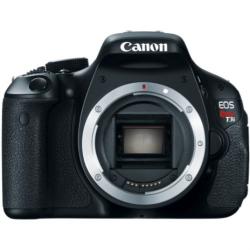 Best Buy – $672.99
Best Buy – $672.99
B&H – $669
Adorama – $599 (refurbrished)
The camera body is one of the most important pieces of your video kit, but you’re allowed to skim off the top here. Going with the low end of the DSLR range won’t hurt your results as much as the $2,399 Canon 5D Mark II will hurt your yearly income. One feature that T3i actually has over the 5D is a flip out LCD screen, similar to a camcorder. The T3i is capable of shooting video at 1080p, and 720p up to 60 frames per second, giving you a variety of options in a small package.
Canon 60D Regular Price: $999
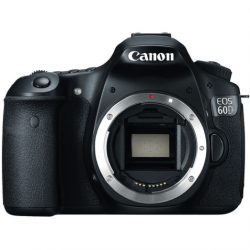 B&H – $899
B&H – $899
Best Buy – $898
Adorama – $749 (Refurbrished)
The Canon 60D has a lot more going for it other than being a member of a good line of Canon cameras (7D, 5D, 1D etc.). Purchasing this camera is essentially a commitment that you plan on doing more than filming holiday movies. It’s packed with more features, some of which are essential for those who plan on using the camera for photography as well. Overall the 60D is more reliable due to its bigger sensor, more accurate battery information, electronic leveling and better overheating performance. If you need your camera to absolutely work when you want it to, or if someone is paying you to make sure you absolutely get the job done, this would be the better choice.
2. LENSES
What makes a DSLR camera great is the flexibility provided by its interchangeable lenses. There will come a day when you purchase a new camera body, but good glass can stay with you forever.
Sigma 30mm f/1.4 Lens Regular Price $499.99
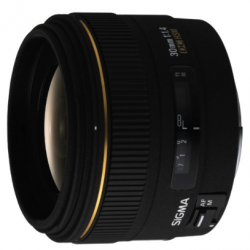
Best Buy – $499.98
B&H – $489
Amazon – $435 – $475 (Used/Refurbished)
The Sigma 30mm is a good starter lens. With a large maximum focal length, it’s the perfect go-to lens for low-light conditions, as well as what you’d use to film scenes with a shallow depth of field. Its 30mm focal length is also great for a variety of situations in the right hands. Though opinions vary from user to user I find this lens to be sharper than comparable lenses manufactured by Canon.
Canon 50mm f/1.8 Lens Regular Price $129.99
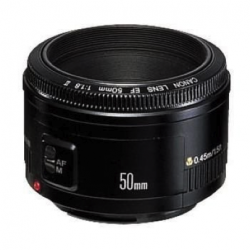 Best Buy – $110
Best Buy – $110
B&H – $99
Adorama – $99
The Canon 50mm f/1.8 will get the job done. For the price there’s not much more you can ask of a lens, and it’s definitely worth it. Like the difference between T3i and 60D, it’s all a matter of what you plan to do with your equipment.
The best advice I could give when it comes to lenses is to do your research to find what works best for you. One thing to watch out for in particular is the difference between cameras with a full frame sensor or an APS-C (Crop) Sensor.
3. ACCESSORIES
Microphones
When it comes to professional projects, sound is often more important than video. There’s nothing more discouraging than a client asking me to make a miracle happen with footage that has been recorded with bad internal microphone audio. I’m more than happy to take their money, but if you’re looking to get the most out of your audio, buying an external microphone is a necessity. Learning how to properly use your microphones is something you can learn from the guides below.
Rodes Video Mic Regular Price $149
 B&H – $149
B&H – $149
Adorama – $149
Rode is a trusted brand that makes affordable audio recording equipment without skimping on reliability and build quality. Though this is their entry level mic, most Rode products won’t cost you more than $300. There are better quality mics out there, if you don’t mind dropping more than a grand on a mic alone.
Pearstone VT-2100 Tripod Regular Price $69.95
Amazon – $69.95
B&H – $69.95
Shaky handheld video is one of the largest dividers of professional and homemade video. Literally any tripod would be better than freely holding the camera. Pearstone tripods, from my own experience, are cheap workhorses that tend to hold up to being thrown about carelessly despite their budget price. If you’re starting what could turn into a vast collection of camera stabilization devices, this is a solid start.
16 GB Class 10 SDHC Memory Card Various Brands $19 – $50
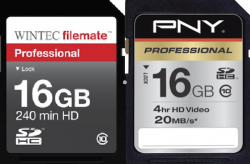 Best Buy
Best Buy
PNY – $49.99
B&H
PNY – $25.97
Newegg.com
PNY – $24.99
Wintec – $18.99
You’re going to need somewhere to put all the video, and luckily memory cards have become dirt-cheap. One 16GB card is good for up to 2 hours of footage. Only word of advice here is to make sure any card you purchase is class 10. Usually there will be some indication on the packaging, or the card itself. This number signifies the speed of the cards read/write capabilities. Using a slow card can result in your camera automatically stopping while you’re recording. Reliability is key.
LEARNING TO SHOOT
Learning DSLR Video (straight-forward, huh?)
Dave Dugdale, the founder and operator of Learning DSLR video is a cross between Mr. Rogers and Bill Nye the Science Guy. Besides his friendly tone in all of his tutorials, there’s the added bonus that you are essentially learning with him. Whenever Dugdale discovers something new or cool he films a short video sharing what he’s learned with his now massive audience. This site could be your go-to for years to come.
Vimeo Video School
The Vimeo community is definitely on the better half of the sewer we call the internet. The Vimeo staff produces informative yet hilarious tutorials on everything from good audio recording practices to lighting, but this is a drop in a bucket compared to videos plucked from users by the staff, and organized into categories. Practically anything you could ever want to know about small scale video production can be found here along with a flood of info you never knew you wanted to know.
MAKE YOUR MONEY BACK!
If you’ve been tallying up the cheapest options on the list, you can get started making high-quality video for less than $1,000!
Then you can get good enough that people are willing to pay you $100 – $300 per video (or avoid having to hire someone to shoot your own video), and it eventually pays for itself. Camera equipment is one tech category that depreciates in value very slowly, if at all, so you’re in good hands when you lay down your hard earned paycheck (credit?). If you have any suggestions on what to add or change speak up in the comments.
Follow Aulistar: @Aulistar.
5 Comments
Leave a Reply




The Canon 1.4 EF 50mm would be a better choice in terms of quality, despite the slightly higher price tag.
Also, the 30mm Sigma may not be flexible enough in most circumstances – the Canon 16-35mm EF 2.8 hits the same range but has more flexibility so you can really control the framing of your video.
For better audio than is available on the Canon cameras, the Zoom H4N is a good, reasonably low-cost alternative that will work perfectly with the recommended microphone.
Don’t forget your shoulder rig for moving shots, either – CPM offers extremely lightweight, carbon fiber rigs that you can load down with your gear and not worry about adding another 10lbs to your shoulder due to the weight of the rig itself.
And, be sure to visit cinema5d.com, which is LOADED with info on the best purchases to make to start and/or grow your DSLR video setup.
Thanks, was considering adding the Zoom H4N or perhaps the Zoom H1 to the guide, but for a good deal of people I feel this would be taking an extra step into making film a career or at least more than a side hustle/hobby.
Also trying to do things as cheap as possible, so while a shoulder rig is great (would probably go with a glidecam myself, looking into purchasing one can be a roadblock to someone with limited funds.
Also would you consider the 50mm f/1.4 over the 30mm sigma considering the crop factor created by the 50mm f/1.4 being built for a full frame camera.
I think lens choice depends on what you’ll be shooting more than anything. I’m very happy with my Canon 50mm 1.4, but barely use it – mostly it’s the wider angle lenses.
Oh, two more things: to get rid of that annoying jello effect that happens to the video when moving the camera around quickly, the $99 proDAD Mercalli plugin for Final Cut/Vegas/Premiere/After Effects does great image stabilization and can get rid of almost all of the jello effect.
Be sure to look into camera profiles as well – if you plan on doing extensive color correction/color grading of the video you shoot, use a completely flat profile, which will record the video a bit less contrasty than the default color profiles.
The best community-rolled options can be found at:
http://www.cinema5d.com/viewtopic.php?f=14&t=3401
And the official Technicolor profile can be found at:
http://www.technicolor.com/en/hi/cinema/filmmaking/digital-printer-lights/cinestyle
What about editing software? I have iMovie, but it’s no good.